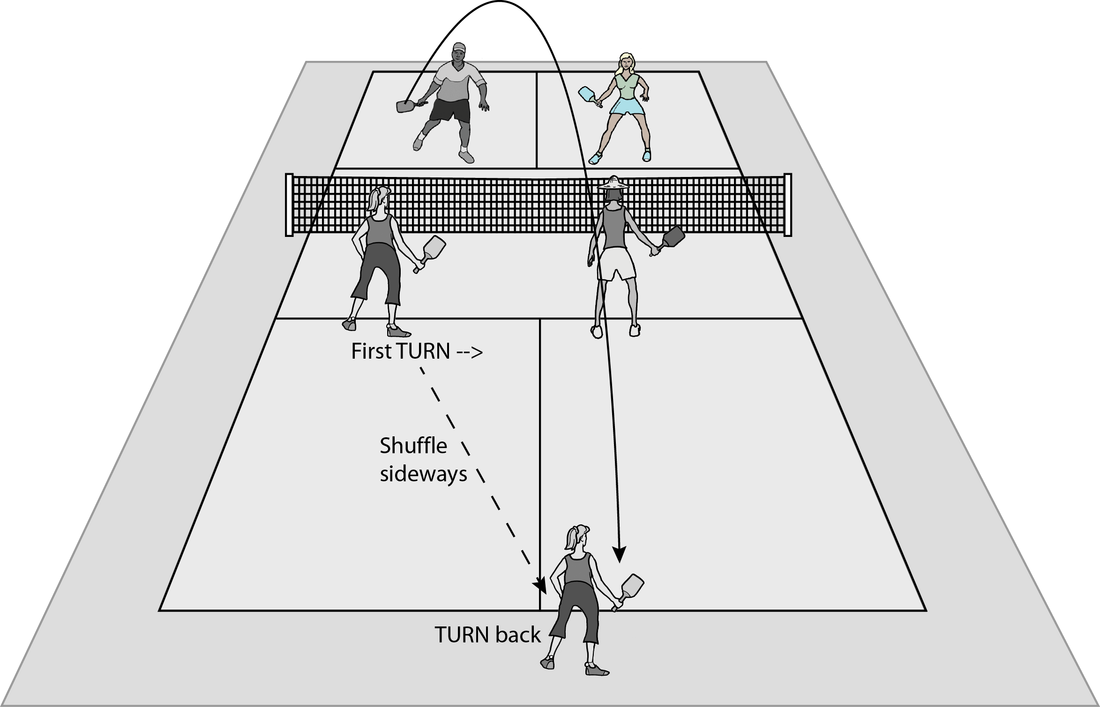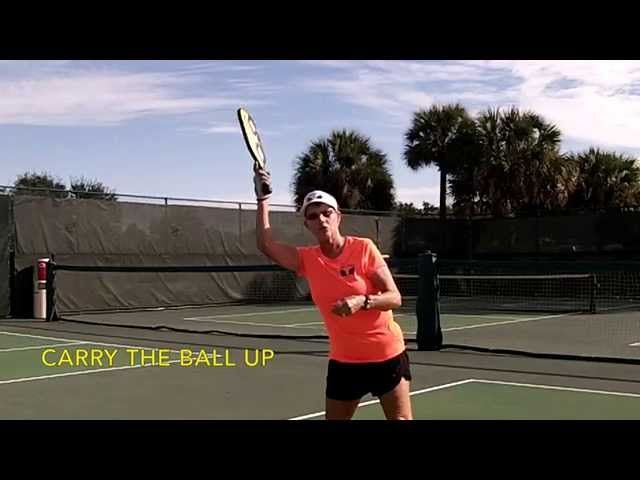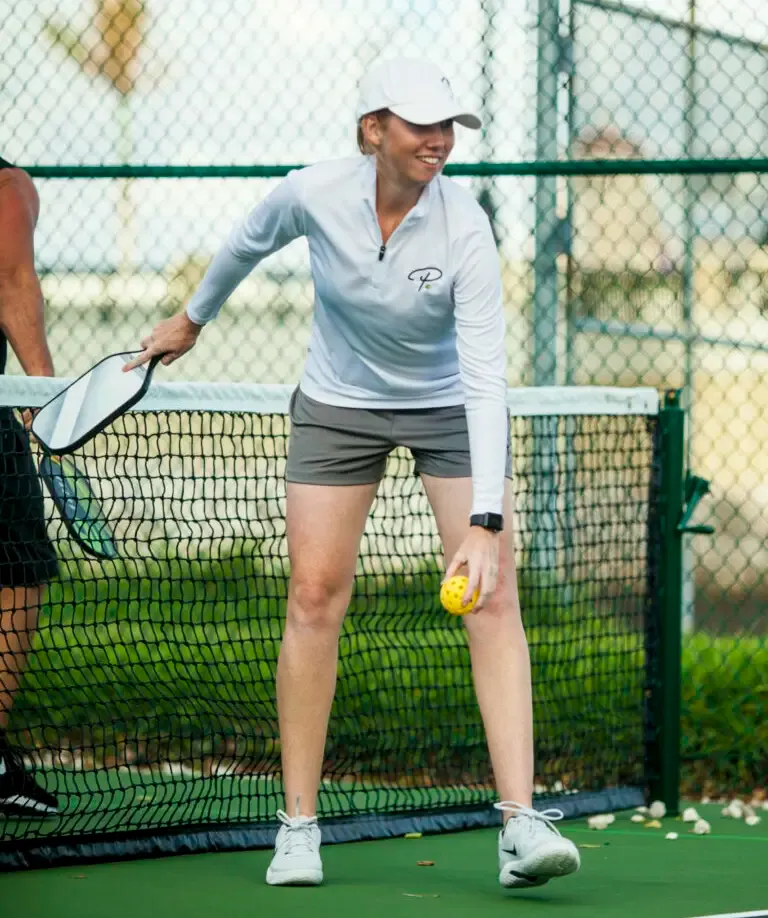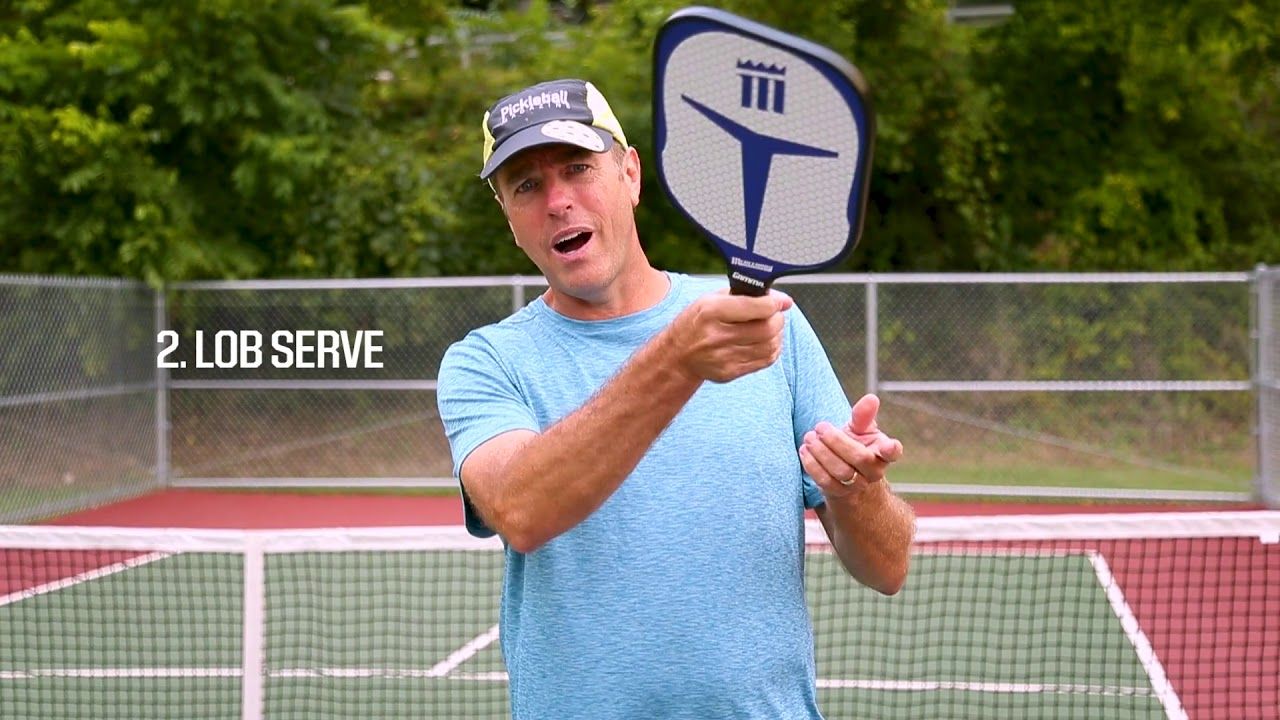Understanding the power of the pickleball lob serve
The essence of the lob serve lies in its ability to alter the dynamics of a match. When executed properly, it serves as a formidable weapon that can throw your opponents off-balance and shift the momentum in your favor.
Advantages of the lob serve
One of the primary advantages of the lob serve is its capacity to disrupt an opponent's rhythm. The unexpected height can force opponents into a state of indecision, resulting in rushed shots or misjudgments about the ball's bounce. Just as a sudden gust of wind can shift a ship's course, so too can a well-placed lob serve redirect the flow of a match.

- Disrupting Opponent's Rhythm
- Unexpected height and depth can lead to mistakes.
- It provides a mental challenge for opponents, forcing adjustments.
- Forcing Opponents Deep
- A well-executed lob serve pushes opponents back from the net.
- This retreat prevents them from mounting aggressive attacks, allowing you to dictate the pace.
- Creating Offensive Opportunities
- A weak return often follows a lob serve, enabling an aggressive third shot.
- You become positioned to take control of the point, transitioning smoothly from defense to offense.
When to unleash the lob serve
Timing is everything in pickleball, and understanding when to deploy the lob serve can maximize its effectiveness.
- As a Change-Up
- Mixing lob serves with your standard serves keeps opponents guessing.
- A diversified serving strategy prevents opponents from establishing a predictable rhythm.
- Against Aggressive Returners
- If your opponent is consistently attacking your serves, introduce a lob serve to neutralize their power.
- This strategic switch forces them to recalibrate their approach.
- Exploiting Opponent Positioning
- Target players positioning themselves close to the non-volley zone line with a well-placed lob serve.
- This tactic can catch them off guard, leading to a challenging return.
Mechanics of a killer lob serve
The lob serve is as much about mechanics as it is about strategy. Mastering the technique will enhance your ability to deliver this powerful shot consistently.

Grip and stance: The foundation
The foundation of a successful lob serve starts with your grip and stance.
- Grip
- A continental grip is generally recommended for versatility and control.
- Players, however, may explore slight adjustments based on their unique playing styles.
- Stance - An open or closed stance can be utilized based on personal comfort.
- Maintain an athletic posture: knees slightly bent, weight evenly distributed.
Contact point: The key to height
For a lob serve to reach its full potential, you must mind the contact point with precision.
- Strike the Underside
- Contact the ball on its underside to generate the necessary height.
- This requires positioning the racket higher than when executing a drive serve.
- Open Paddle Face - Angle your paddle face upward to lift the ball effectively.
- This technique is pivotal in achieving the desired parabolic trajectory.
Follow through: Reaching for the sky
Following through on your serve is crucial for generating both height and depth.
- Upward Finish
- Your follow-through should showcase a vertical motion, extending your arm upward.
- Finish with your paddle face pointing towards the sky for maximum effectiveness.
- Generating Height and Depth
- A smooth, unrestricted follow-through is essential for getting the ball deep into your opponent's court.
- Both trajectory and distance rely heavily on a well-executed finishing motion.
Precision and placement: Making your lob serve count
An effective lob serve isn’t merely about hitting it high; it’s about precision and placement.

Aiming for depth: Finding the sweet spot
Successful placement of your lob serves is crucial for maintaining pressure on your opponent.
- Targeting the Back Court
- Aim for a landing area about 2 to 3 feet inside the baseline.
- This strategy helps you avoid hitting the ball out of bounds, while still keeping your opponent deep in their court.
- Consistent Depth Control
- Practice aiming for specific targets to build your depth consistency.
- An organized approach to depth will improve your overall serving game.
Controlling the height: Adjusting your trajectory
Mastering the height of your lob serve will allow you to adjust based on various situations.
- Higher Contact, Higher Arc: For a high lob serve, ensure your contact point is elevated, coupled with a pronounced upward follow-through.
- Lower Contact, Flatter Trajectory: Conversely, a lower contact point tends to produce a flatter trajectory, useful in specific situations.
- Wind Considerations: Be mindful of wind conditions, adjusting height accordingly sometimes hitting higher serves for compensation.

Advanced techniques: Taking your lob serve to the next level
Once you've mastered the basic mechanics, it's time to delve into advanced techniques that can elevate your lob serve.
Adding topspin: The secret sauce
Incorporating topspin into your lob serves can significantly enhance their effectiveness.
- Benefits of Topspin
- Topspin increases control and produces a higher bounce, complicating returns.
- It allows the ball to break the plane at a steeper angle.
- Technique for Topspin
- Generate topspin by brushing upward on the ball's backside using an open paddle face.
- A synchronized motion involving pronation of the wrist, elbow, and shoulder is essential.
- Practice for Mastery
- Regularly practice this motion until it feels fluid.
- Adding topspin provides that extra edge needed to confuse your opponents.
The art of disguise: Keeping them guessing
In a game as much about mental engagement as physical skill, disguising your maneuvers is key.
- Maintain Similar Mechanics
- Start your lob serve with the same motions as your other serves to prevent predictability.
- This visual similarity can leave your opponents second-guessing their reactions.
- Vary Paddle Speed
- Use slightly slower paddle speed for lob serves, contrasting with the briskness of your drive serves.
- This subtle variation can confuse opponents, ensuring an effective serve.
- Mixing Serves
- Keep a varied serve repertoire to maintain unpredictability.
- Regularly mixing serves, varying pace and placement, fosters an advantageous game dynamic.
Conclusion
Mastering the pickleball lob serve is about more than just hitting the ball high; it’s a dance of tactics, mechanics, precision, and psychology. This serve can propel you to new heights in your playing career, establishing control, disrupting opponents, and creating offensive opportunities. As you continue to explore and refine your lob serve, remember that practice, patience, and thoughtful analysis are key. With dedication, you will find this technique not only enhances your game but also transforms your entire approach to competing in pickleball, allowing you to harness the power of a truly game-changing weapon.










